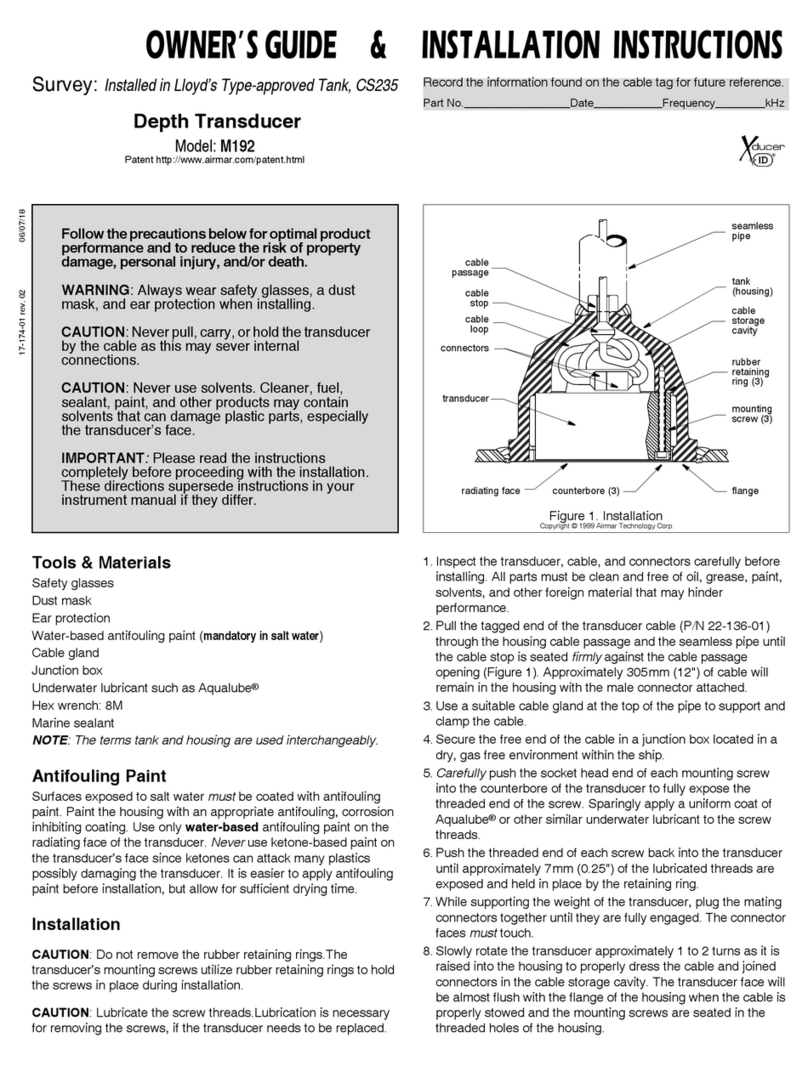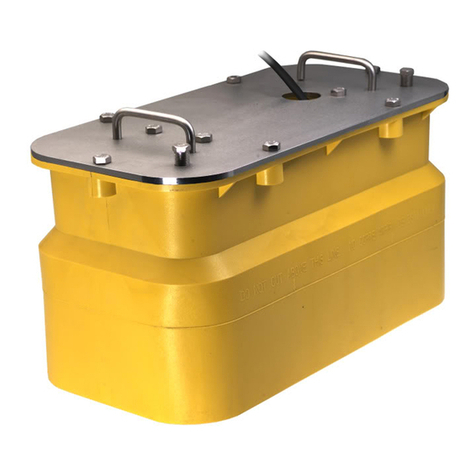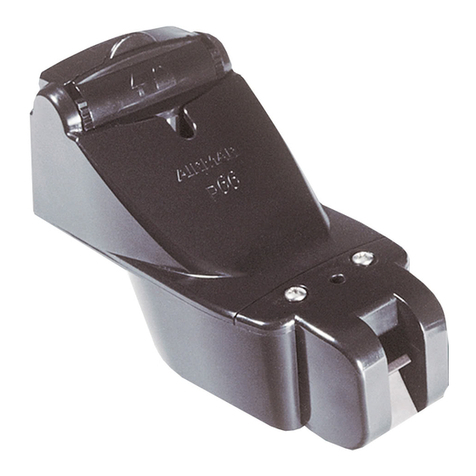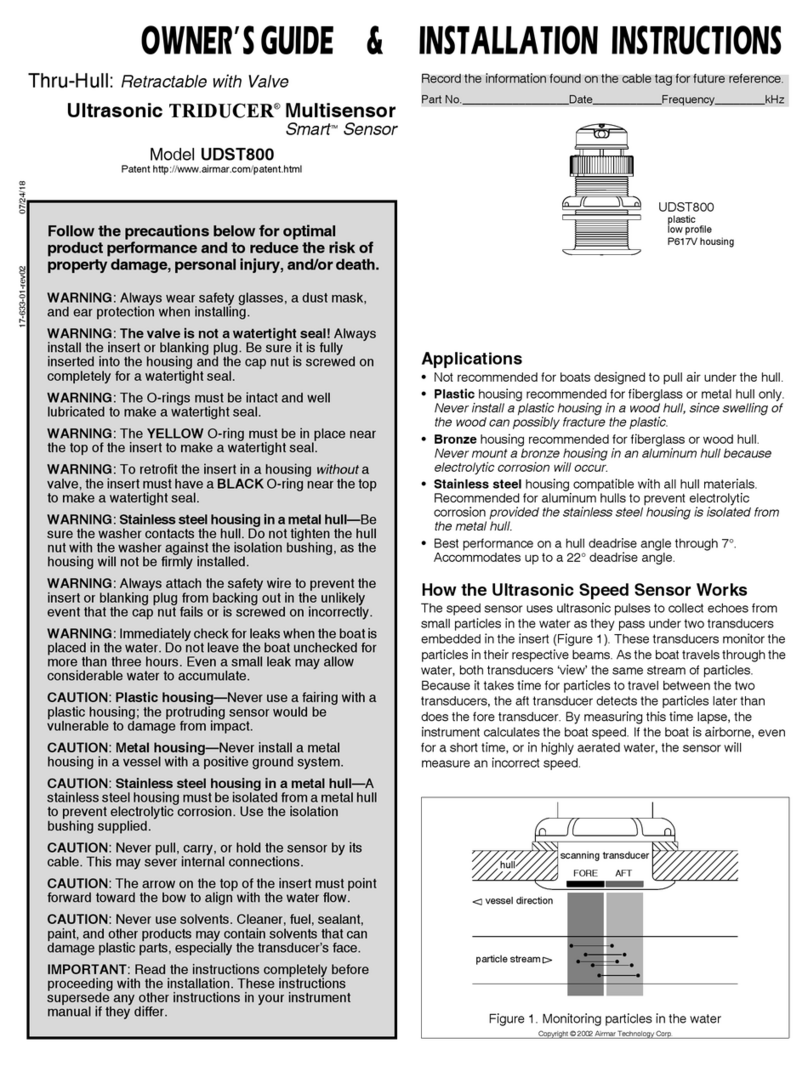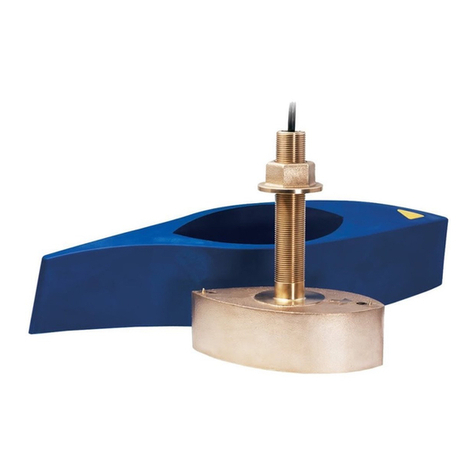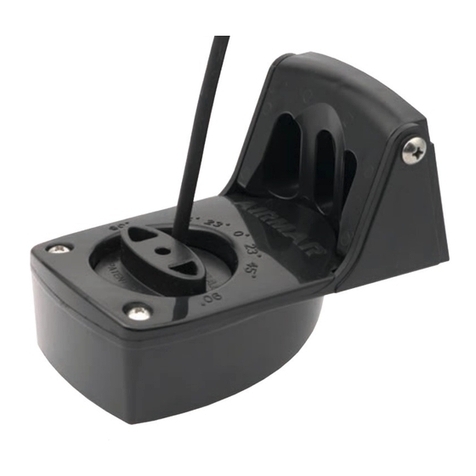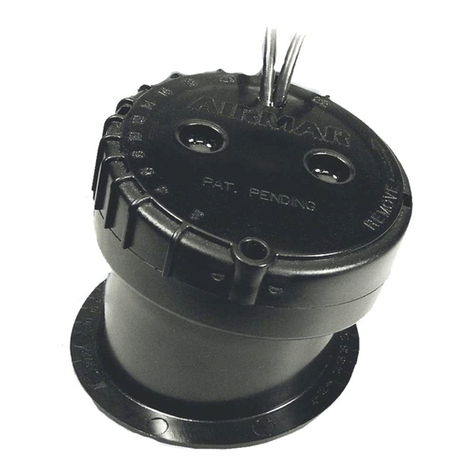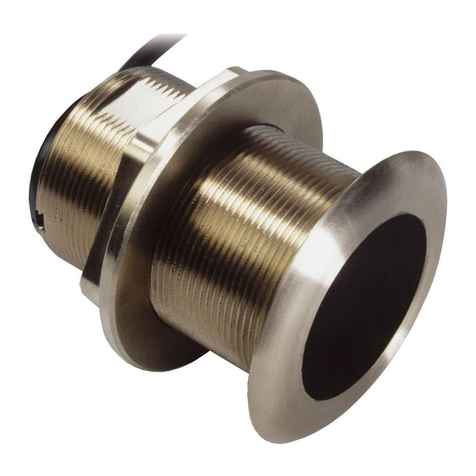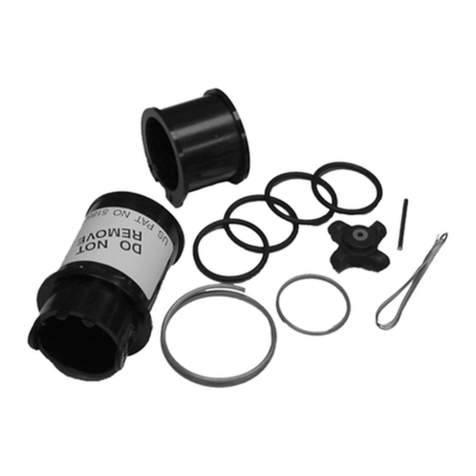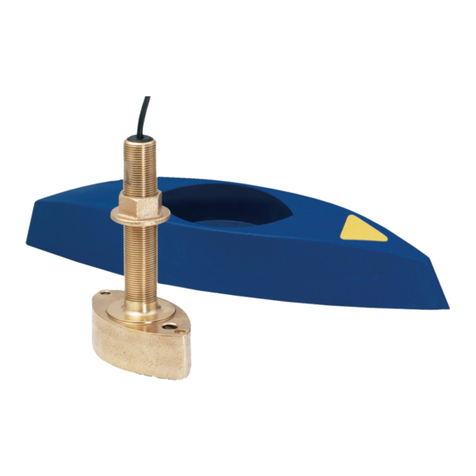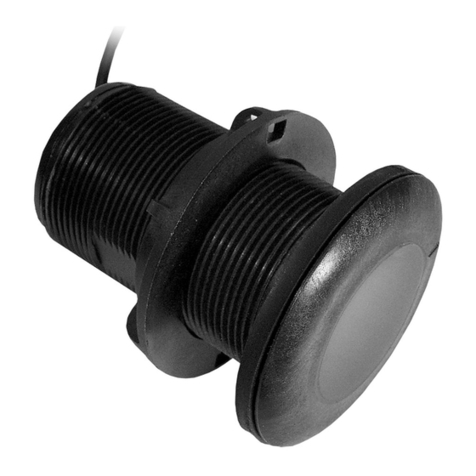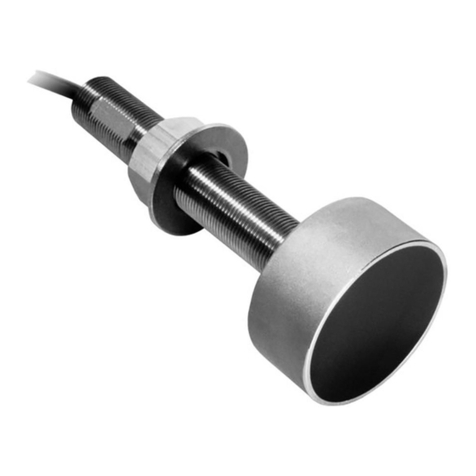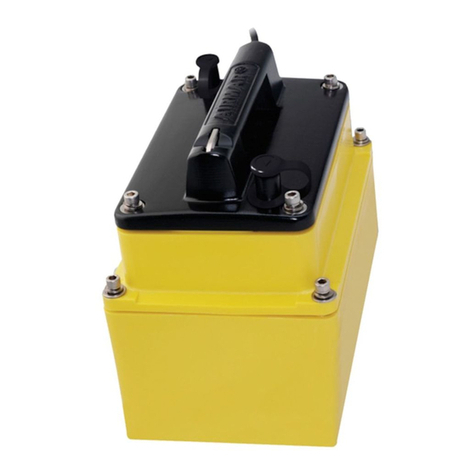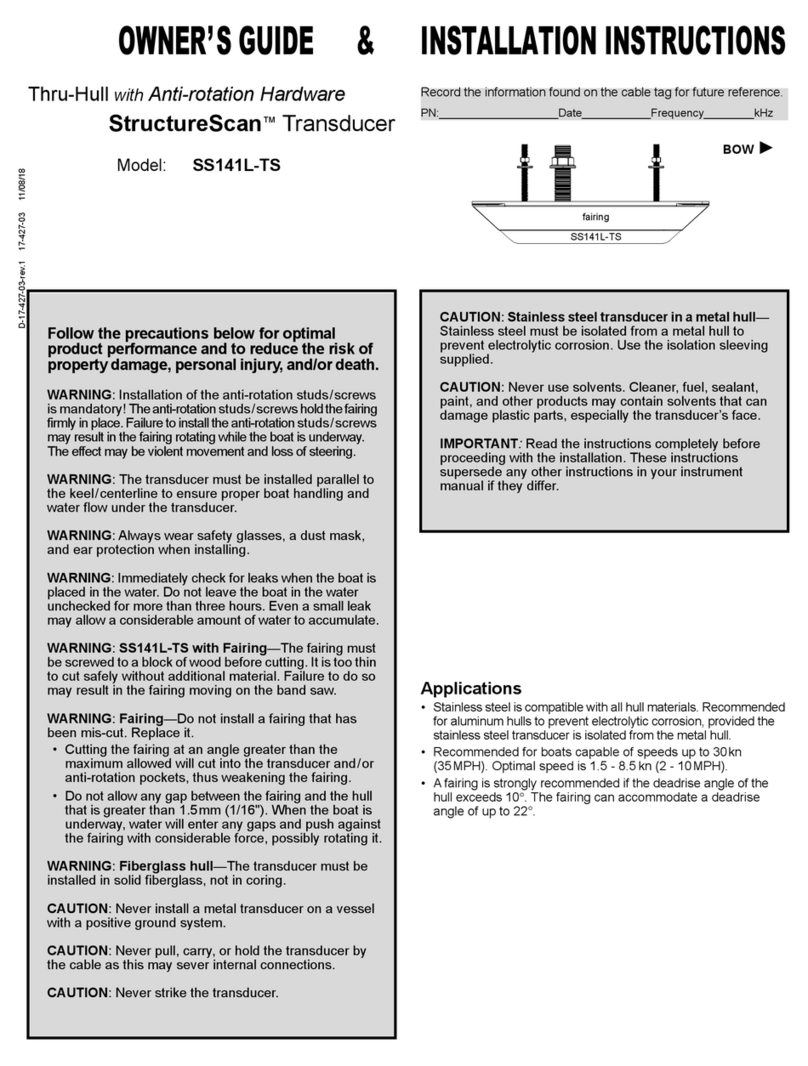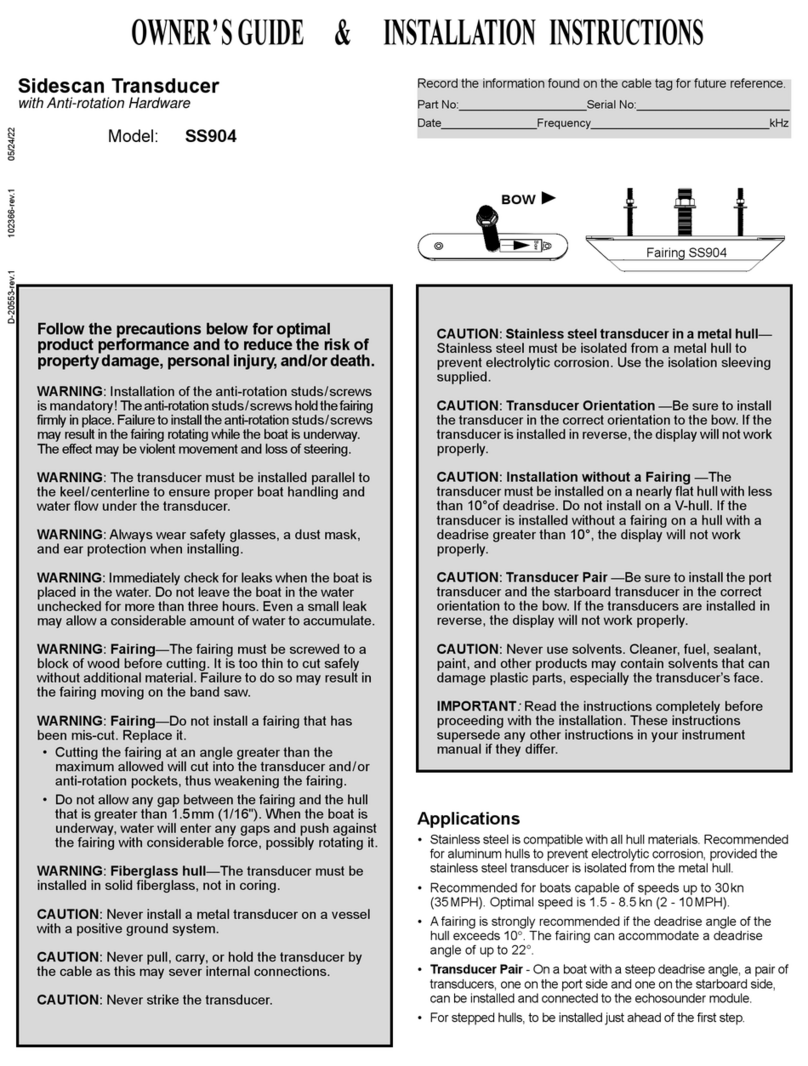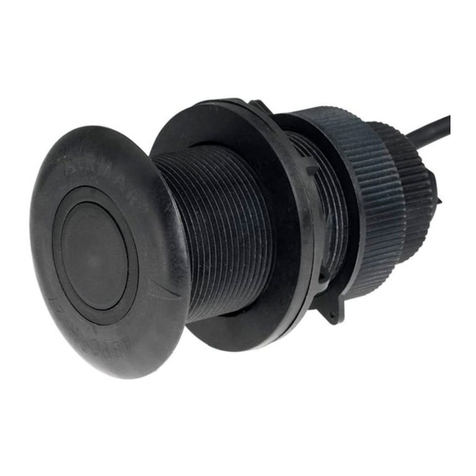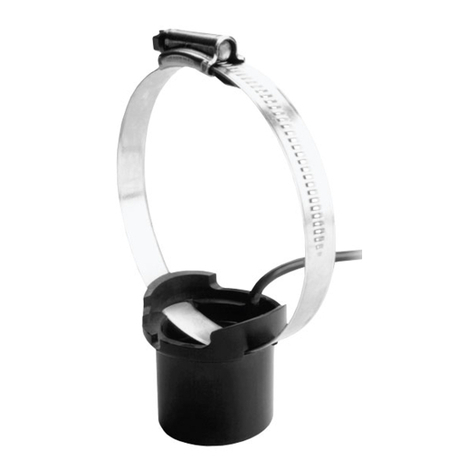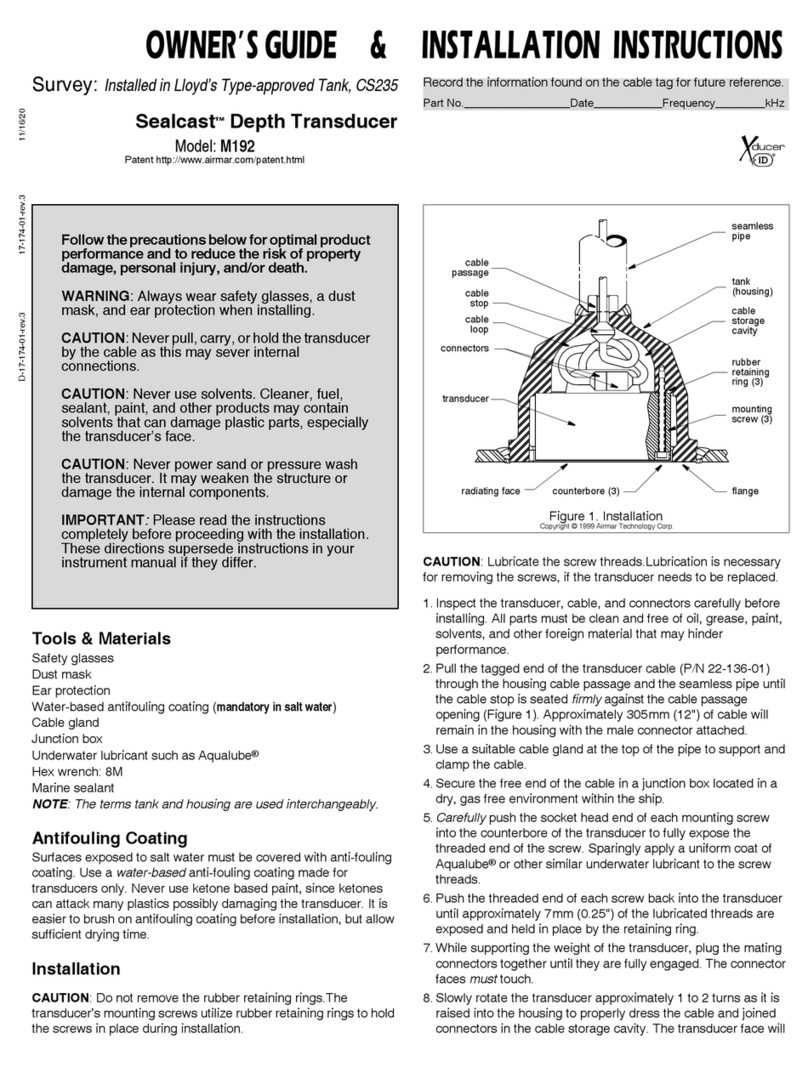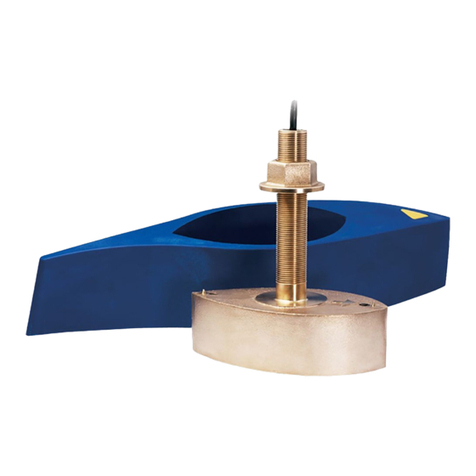
4Copyright © 2004 - 2015 Airmar Technology Corp. All rights reserved.
1. The O-rings must be intact and well lubricated to make a
watertight seal. On the blanking plug, inspect the O-rings
(replace if necessary) and lubricate them with the silicone
lubricant supplied or petroleum jelly (Vaseline®) (see Figure 4).
2. Remove the insert from the housing by removing the safety wire
from the cap nut. Unscrew the cap nut to lift the insert (see
Figure 2). Remove the insert with a slow pulling motion.
3. Slide the blanking plug into the housing. Screw the cap nut
several turns until the threads are engaged. Rotate the blanking
plug until the key fits into the notch in the housing. Continue to
tighten the cap nut. Hand tighten only. Do not over tighten.
4. Reattach the safety wire to prevent the blanking plug from
backing out in the unlikely event that the cap nut fails or is
screwed on incorrectly.
Winterizing
After the boat has been hauled for winter storage, remove the
blanking plug to let the water drain away before reinserting it. This
will prevent any water from freezing around the blanking plug and
possibly cracking it.
Servicing the Insert
Aquatic growth can impede or freeze the paddlewheel’s rotation and
must be removed. Clean the surface using a Scotch-Brite®scour pad
and mild household detergent. If fouling is severe, push out the shaft
using a spare shaft or a 4D finish nail with a flattened point. Then,
lightly wet sand the surface with fine grade wet/dry paper.
The water lubricated paddlewheel bearings have a life of up to 5
years on low-speed boats [less than 10kn (11 MPH)] and 1 year
on high-speed vessels. Paddlewheels can fracture and shafts can
bend due to impact with water borne objects. O-rings must be free
of abrasions and cuts to ensure a watertight seal. Order a
replacement Paddlewheel, Shaft & O-ring Kit, 33-499-01.
1. Using the new shaft, push the old shaft out about 6mm (1/4"). With
pliers, remove the old shaft (see Figure 4).
2. Place the new paddlewheel in the cavity with the flat side of the blade
facing the same direction as the arrow on the insert top.
3. Tap the new shaft into place until the ends are flush with the insert.
4. Install a large O-ring near the top and a small O-ring near the
paddlewheel.
5. Place the two remaining O-rings in similar positions on the blanking plug.
Servicing the Valve Assembly
Should the valve fail, remove it for servicing.
1. The O-rings must be intact and
well lubricated to make a
watertight seal. On the
blanking plug, inspect the
O-rings (replace if necessary)
and lubricate them with
silicone lubricant or petroleum
jelly (Vaseline®).
2. Remove the insert/blanking
plug from the housing.
3. Remove the snap ring from
the valve assembly using a
screw-driver to pry the end of
the ring free (see Figure 5).
4. Slide the valve assembly
upward and out of the housing
slowly.
NOTE: The flap valve retainer
pin is a loose slip-fit and may
fall out when the assembly is removed.
5. Push the blanking plug into the housing. Screw the cap nut several
turns until the threads are engaged. Rotate the blanking plug until the
key fits into the notch in the housing. Continue to tighten the cap nut.
Hand tighten only. Do not over tighten. Reattach the safety wire (see
Figure 2).
6. Clean, repair, or replace the valve assembly so the flap valve moves
freely and seats against the valve housing.
7. To reinstall the valve assembly, first reassemble the flap valve in the
valve housing with the retainer pin and spring in place (see Figure 5).
8. Remove the blanking plug. Slide the valve assembly into the housing
with the flap valve pointing downward. Install the snap ring being certain
that it LOCKS INTO THE GROOVE in the housing wall.
9. Slide the insert (or the blanking plug) into the housing with the arrow on
the top pointing forward toward the bow. Screw the cap nut several
turns until the threads are engaged. Rotate the insert (or the blanking
plug) until the key engages the notch in the housing.Be sure the arrow
on the top is facing forward toward the bow. Continue to tighten the cap
nut. Hand tighten only. Do not over tighten.
10.Reattach the safety wire to prevent the insert/blanking plug from
backing out in the unlikely event that the cap nut fails or is screwed on
incorrectly (see Figure 2).
Replacement Sensor & Parts
The information needed to order a replacement sensor is printed on the cable
tag. Do not remove this tag. When ordering, specify the part number and date.
For convenient reference, record this information on the top of page one.
Lost, broken, and worn parts should be replace immediately. If you have
purchased a plastic housing and have a wood hull or desire greater
strength, purchase a bronze housing.
Paddlewheel, Shaft & O-ring Kit 33-499-01
Obtain parts from your instrument manufacturer or marine dealer.
Gemeco (USA) Tel: 803.693.0777
Fax: 803.693.0477
Airmar EMEA Tel: +33.(0)2.23.52.06.48
(Europe, Middle East, Africa) Fax: +33.(0)2.23.52.06.49
Blanking Plug Hull Nut Housing, Hull Nut & Washer Paddlewheel
& Valve Kit
33-481-01 04-004 (plastic)
02-030 (bronze)
33-340-02 (plastic, P120)
33-340-01 (bronze, B120) 33-493-01
Figure 4. Replacing the paddlewheel and O-rings
arrow
flat side
of blade
shaft
faces bow
large
O-ring
small
O-ring
Copyright © 2006 Airmar Technology Corp.
paddlewheel
insert
blanking
plug snap ring
valve assembly
flap valve
spring
retainer pin
housing
notch
Figure 5. Servicing
the valve assembly
Copyright © 2006 Airmar Technology Corp.
BOW ►
35 Meadowbrook Drive, Milford, New Hampshire 03055-4613, USA
•www.airmar.com

